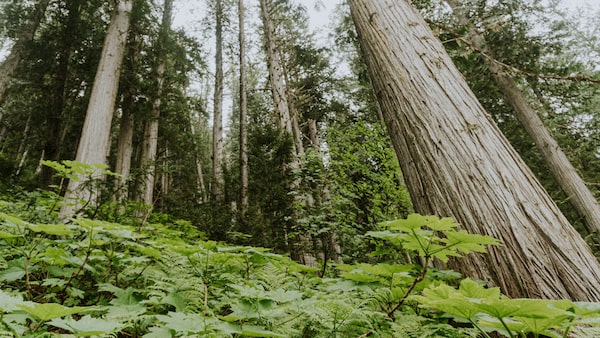
Part of an old-growth deferral area north of Revelstoke, B.C.Eddie Petryshen/The Canadian Press
B.C. Finance Minister Katrine Conroy’s new budget promises to take action to protect the province’s “precious ecosystems and biodiversity.” But conservation groups say the government is taking British Columbia’s natural resources for granted, directing an ever-shrinking share of expenditures to the preservation of air, lands, waters and wildlife.
Since 1990, natural-resource management as a share of the total provincial budget has declined, to slightly more than 1 per cent today from about 5 per cent. “In that time, we have added millions of people, with all the related habitat loss and degradation of the land, and then we have reduced funding to take care of fish, wildlife, air, water, trees,” said Jesse Zeman, executive director of the B.C. Wildlife Federation.
The Wildlife Federation has charted the province’s spending on protecting its natural resources since the 1970s. While the NDP made an election promise to give wildlife habitat and conservation “a place of priority once again,” Mr. Zeman says the budget numbers tell a different story. Adjusted for inflation, funding for natural resources in B.C. peaked in 1996, and has declined under both Liberal and NDP governments since.
The province’s rich ecosystems and biodiversity are increasingly precarious, with a growing list of endangered species and declining fish and wildlife populations. The cost of protection is only growing, he said. “The equation is impossible. You can’t say you are going to take care of species in decline, and also give them fewer dollars.”
George Heyman, B.C.’s Minister of Environment and Climate Change Strategy, said in an interview that financing for conservation will be available as needed, even though it is not included in his ministry budget. “While there isn’t a pot of money that exists. We have used contingencies for much of that work.”
https://www.theglobeandmail.com/canada/british-columbia/article-bc-2023-budget-david-eby/
He said the province is still working to negotiate a nature agreement with the federal government that would deliver additional funding for conservation. As well, the province is looking to private philanthropy to create protected areas.
“It’s partnerships across governments and interested foundations and individuals that will provide the funding necessary for us to make this key transition,” Mr. Heyman said.
The federal government is turning to “nature-based solutions” to help Canada mitigate and adapt to climate change. Conservation of forests, wetlands, grasslands and the oceans offers carbon storage, while also supporting biodiversity. Ottawa has promised to protect 30 per cent of its lands and waters by 2030 as part of that plan.
Mr. Heyman said his government’s climate plan is more focused on emission reductions and helping communities become resilient to changes brought by extreme weather. But the province does see conservation as part of the answer to dealing with climate change, he added.
“Nature-based solutions is definitely one of the ways to store carbon,” he said. “For instance, the cessation of logging in ancient forests with large old-growth trees is an important way to store carbon.” His government promised in February to fast-track work to defer logging in one third of B.C.’s remaining old-growth forests.
B.C. has also committed to the “30 by ‘30″ target, but the Wilderness Committee found nothing in the new budget to help achieve that goal. “We were looking for hundreds of millions of dollars in the years ahead to help enable conservation in old-growth forests and other important ecosystems and support solutions like Indigenous Protected and Conserved Areas,” said the organization’s lead campaigner, Torrance Coste, in a statement. “Budget 2023 doesn’t deliver that.”
In her budget speech on Tuesday, Ms. Conroy mentioned the climate 11 times. Her budget promises $1-billion over three years to fight climate change by building more climate-resilient communities. That includes money to increase the province’s emergency-management capacity and help buy more firefighting equipment. “We must prepare for a changing climate, but we must also do our part to fight climate change. Because the cost of doing nothing – or not enough – is too high for people and our environment,” Ms. Conroy said.
 Justine Hunter
Justine Hunter